Home > Directory of Drawing Lesson > Drawing People > Drawing People & Artistic Anatomy
Learn How to Draw People & the Human Form with this Lesson by Drawing Basic Geometric Shapes and Forms |
|
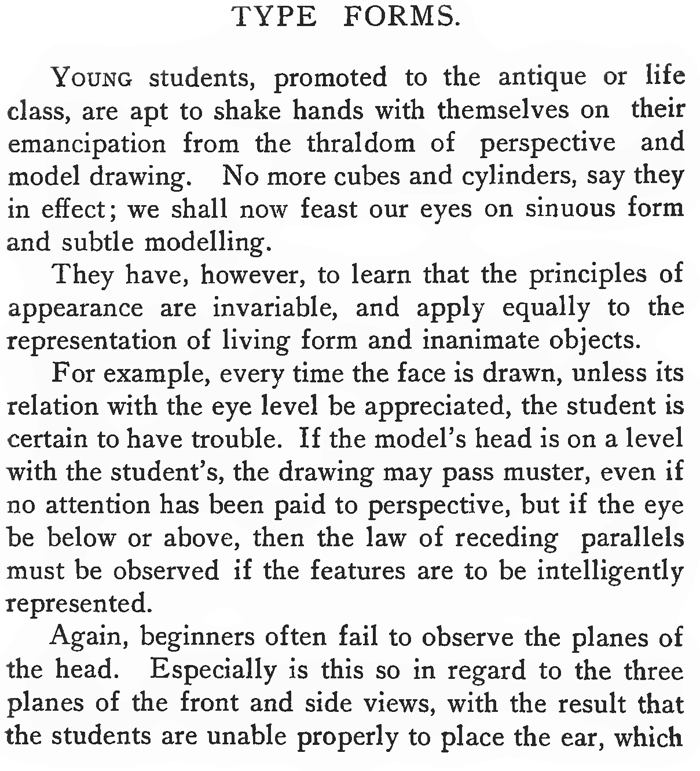
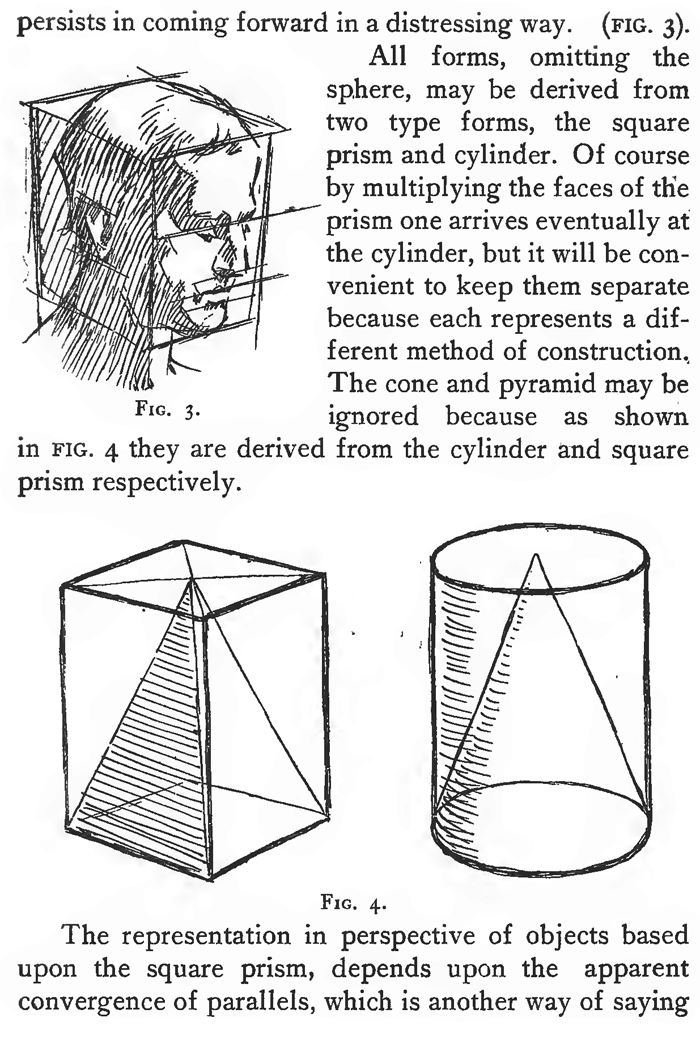
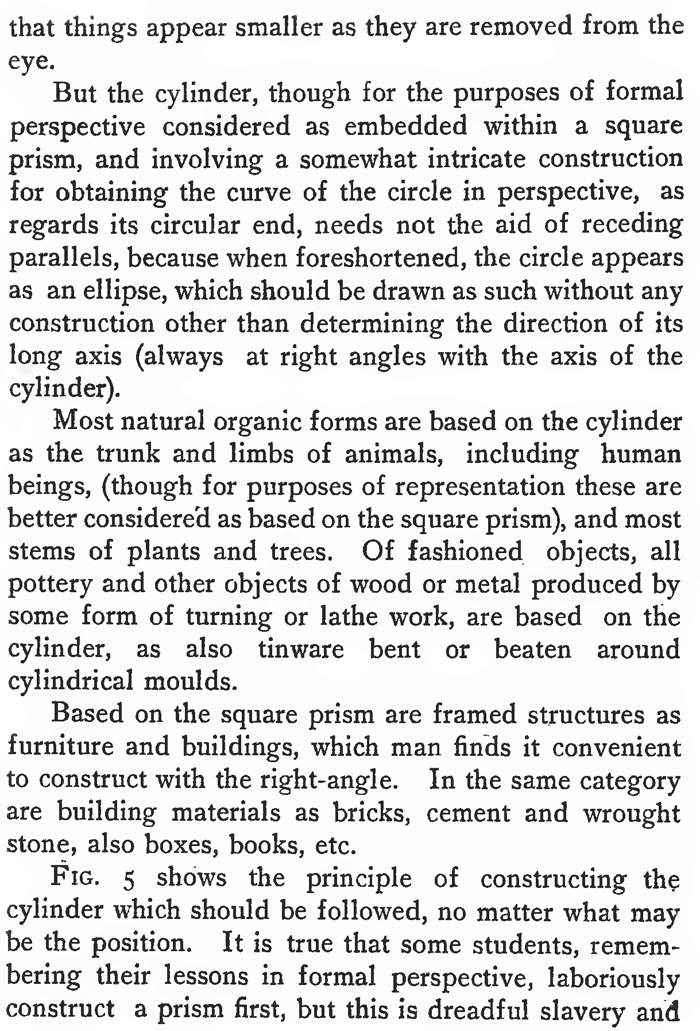
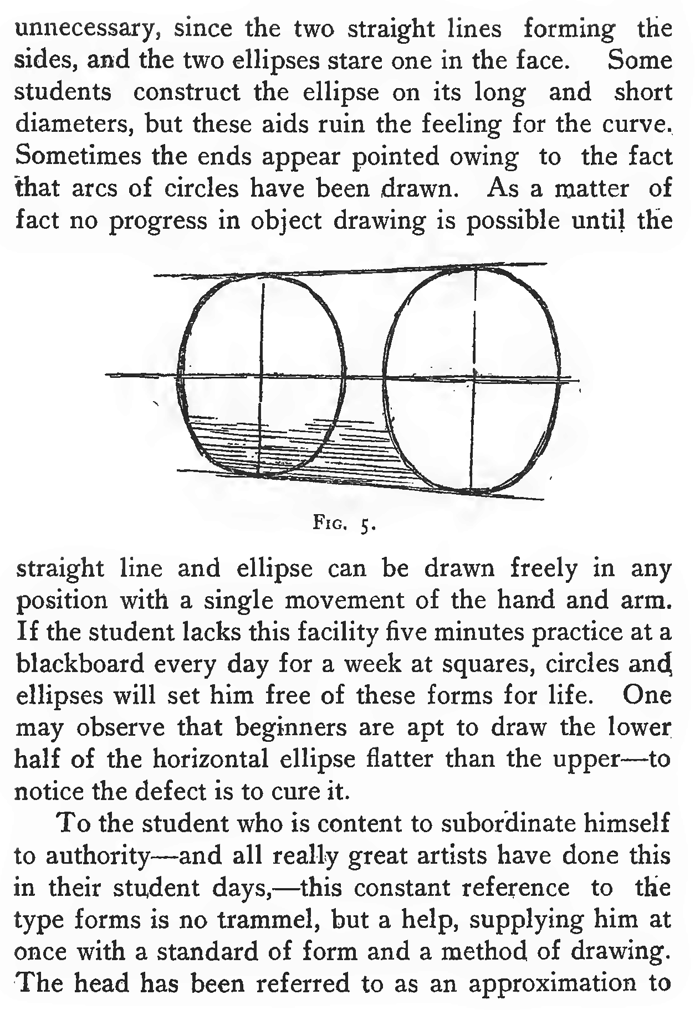
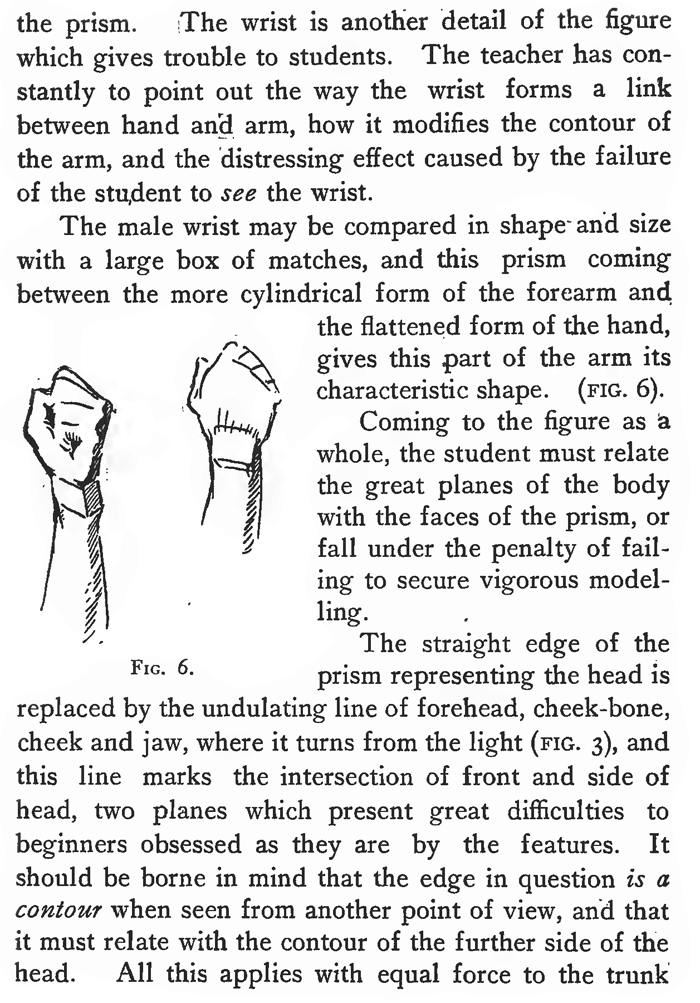
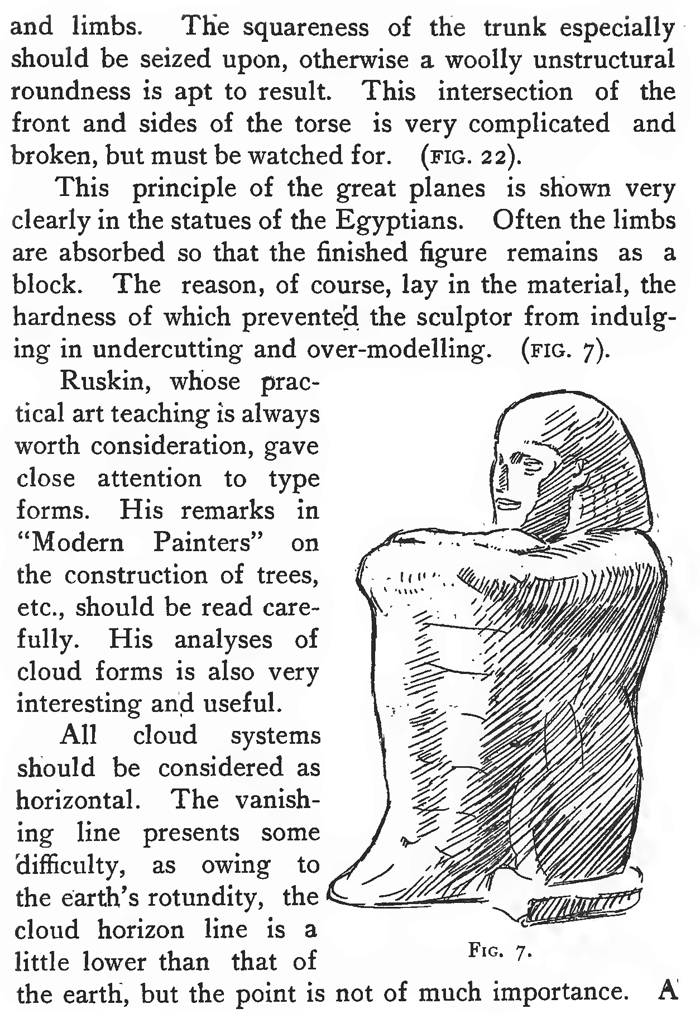
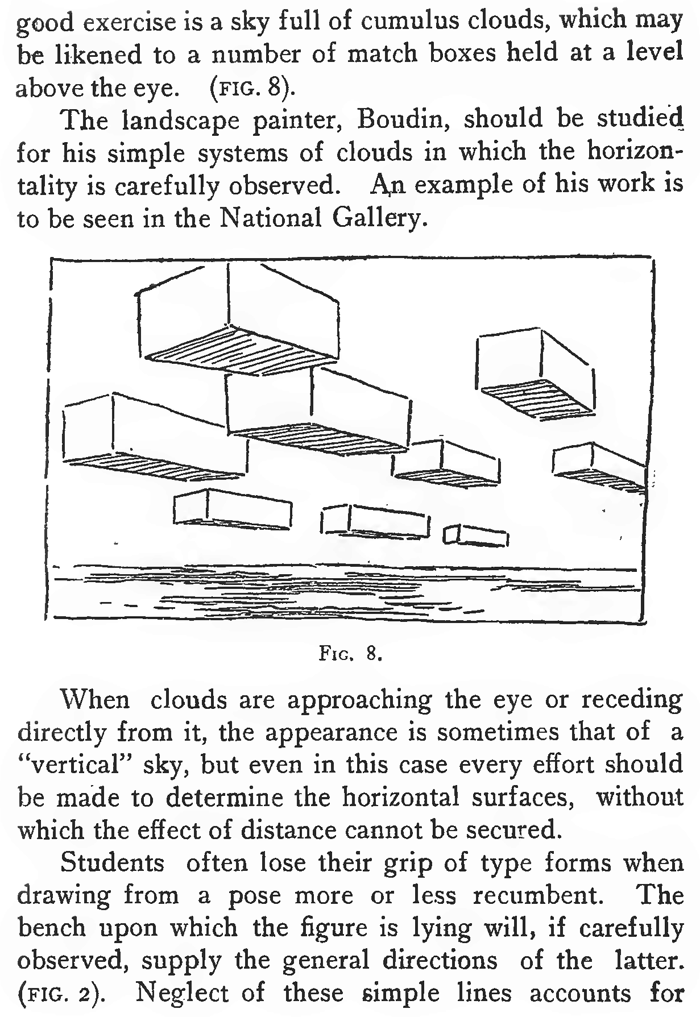
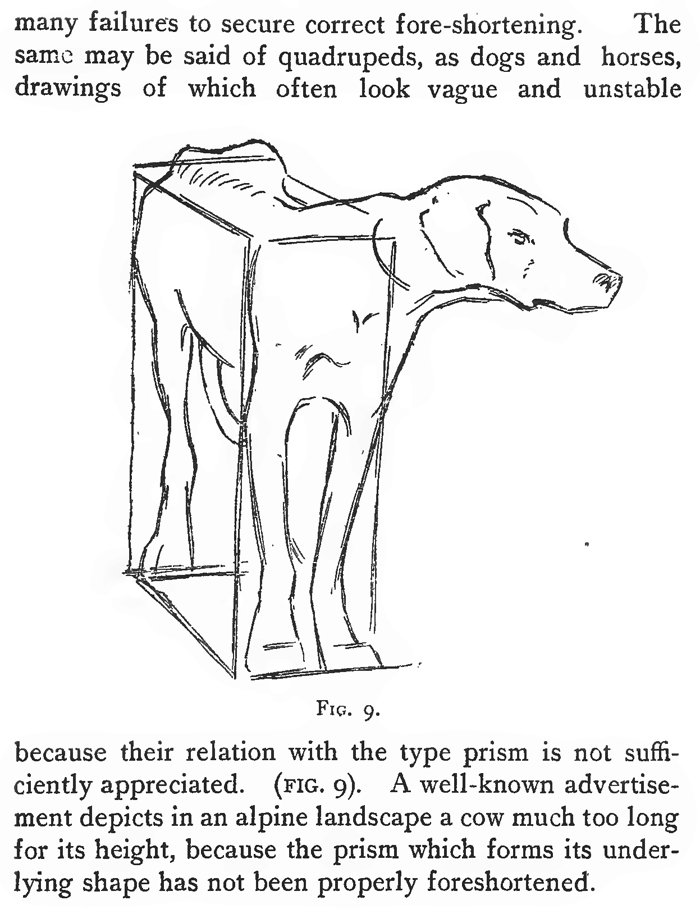
The text above is made up of images, so, if you need to copy any of the text for a school assignment, please copy some of the text below.
TYPE FORMS.
Young students, promoted to the antique or life class, are apt to shake hands with themselves on their emancipation from the thralldom of perspective and model drawing. No more cubes and cylinders, say they in effect; we shall now feast our eyes on sinuous form and subtle modeling.
They have, however, to learn that the principles of appearance are invariable, and apply equally to the representation of living form and inanimate objects.
For example, every time the face is drawn, unless its relation with the eye level be appreciated, the student is certain to have trouble. If the model's head is on a level with the student's, the drawing may pass muster, even if no attention has been paid to perspective, but if the eye be below or above, then the law of receding parallels must be observed if the features are to be intelligently represented.
Again, beginners often fail to observe the planes of the head. Especially is this so in regard to the three planes of the front and side views, with the result that the students are unable properly to place the ear, which persists in coming forward in a distressing way. (FIG. 3).
All forms, omitting the sphere, may be derived from two type forms, the square prism and cylinder. Of course by multiplying the faces of the prism one arrives eventually at the cylinder, but it will be convenient to keep them separate because each represents a different method of construction. The cone and pyramid may be FIG. 3. ignored because as shown in FIG. 4 they are derived from the cylinder and square prism respectively.
The representation in perspective of objects based upon the square prism, depends upon the apparent convergence of parallels, which is another way of saying that things appear smaller as they are removed from the eye.
But the cylinder, though for the purposes of formal perspective considered as embedded within a square prism, and involving a somewhat intricate construction for obtaining the curve of the circle in perspective, as regards its circular end, needs not the aid of receding parallels, because when foreshortened, the circle appears as an ellipse, which should be drawn as such without any construction other than determining the direction of its long axis (always at right angles with the axis of the cylinder).
Most natural organic forms are based on the cylinder as the trunk and limbs of animals, including human beings, (though for purposes of representation these are better considered as based on the square prism), and most stems of plants and trees. Of fashioned objects, all pottery and other objects of wood or metal produced by some form of turning or lathe work, are based on the cylinder, as also tin-ware bent or beaten around cylindrical moulds.
Based on the square prism are framed structures as furniture and buildings, which man finds it convenient to construct with the right-angle. In the same category are building materials as bricks, cement and wrought stone, also boxes, books, etc.
FIG. 5 shows the principle of constructing the cylinder which should be followed, no matter what may be the position. It is true that some students, remembering their lessons in formal perspective, laboriously construct a prism first, but this is dreadful slavery and
unnecessary, since the two straight lines forming the sides, and the two ellipses stare one in the face. Some students construct the ellipse on its long and short diameters, but these aids ruin the feeling for the curve. Sometimes the ends appear pointed owing to the fact that arcs of circles have been drawn. As a matter of fact no progress in object drawing is possible until the
straight line and ellipse can be drawn freely in any position with a single movement of the hand and arm. If the student lacks this facility five minutes practice at a blackboard every day for a week at squares, circles and ellipses will set him free of these forms for life. One may observe that beginners are apt to draw the lower half of the horizontal ellipse flatter than the upper—to notice the defect is to cure it.
To the student who is content to subordinate himself to authority—and all really great artists have done this in their student days,—this constant reference to the type forms is no trammel, but a help, supplying him at once with a standard of form and a method of drawing. The head has been referred to as an approximation to the prism. The wrist is another detail of the figure which gives trouble to students. The teacher has constantly to point out the way the wrist forms a link between hand and arm, how it modifies the contour of the arm, and the 'distressing effect caused by the failure of the student to see the wrist.
The male wrist may be compared in shape-and-size with a large box of matches, and this prism coming between the more cylindrical form of the forearm and the flattened form of the hand, gives this part of the arm its characteristic shape.
Coming to the figure as A whole, the student must relate the great planes of the body with the faces of the prism, or fall under the penalty of failing to secure vigorous modeling.
The straight edge of the
prism representing the head is
replaced by the undulating line of forehead, cheek-bone,
cheek and jaw, where it turns from the light (FIG. 3), and
this line marks the intersection of front and side of
head, two planes which present great difficulties to
beginners obsessed as they are by the features. It
should be borne in mind that the edge in question is a
contour when seen from another point of view, and that
it must relate with the contour of the further side of the
head. All this applies with equal force to the trunk
and limbs. The square-ness of the trunk especially should be seized upon, otherwise a woolly unstructured roundness is apt to result. This intersection of the front and sides of the torso is very complicated and broken, but must be watched for.
This principle of the great planes is shown very clearly in the statues of the Egyptians. Often the limbs are absorbed so that the finished figure remains as a block. The reason, of course, lay in the material, the hardness of which prevented the sculptor from indulging in undercutting and modeling.
Ruskin, whose practical art teaching is always worth consideration, gave close attention to type forms. His remarks in "Modern Painters" on the construction of trees, etc., should be read carefully. His analyses of cloud forms is also very interesting and useful.
All cloud systems should be considered as horizontal. The vanishing line presents some 'difficulty, as owing to the earth's rotundity, the cloud horizon line is a little lower than that of the earth, but the point is not of much importance. A good exercise is a sky full of cumulus clouds, which may be likened to a number of match boxes held at a level above the eye.
The landscape painter, Boudin, should be studied for his simple systems of clouds in which the horizontality is carefully observed. An example of his work is to be seen in the National Gallery.
When clouds are approaching the eye or receding directly from it, the appearance is sometimes that of a "vertical" sky, but even in this case every effort should be made to determine the horizontal surfaces, without which the effect of distance cannot be secured.
Students often lose their grip of type forms when drawing from a pose more or less recumbent. The bench upon which the figure is lying will, if carefully observed, supply the general directions of the latter. Neglect of these simple lines accounts for many failures to secure correct fore-shortening. The same may be said of quadrupeds, as dogs and horses, drawings of which often look vague and unstable because their relation with the type prism is not sufficiently appreciated. A well-known advertisement depicts in an alpine landscape a cow much too long for its height, because the prism which forms its underlying shape has not been properly foreshortened.




